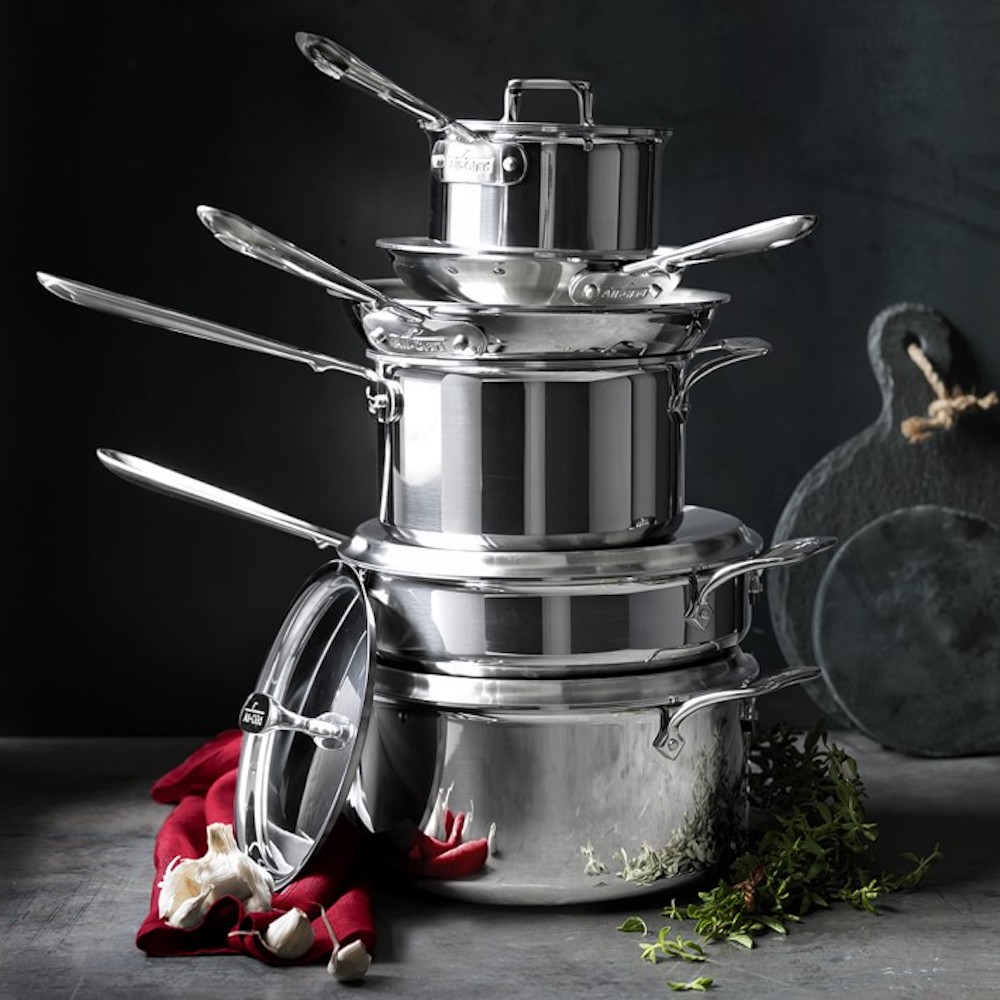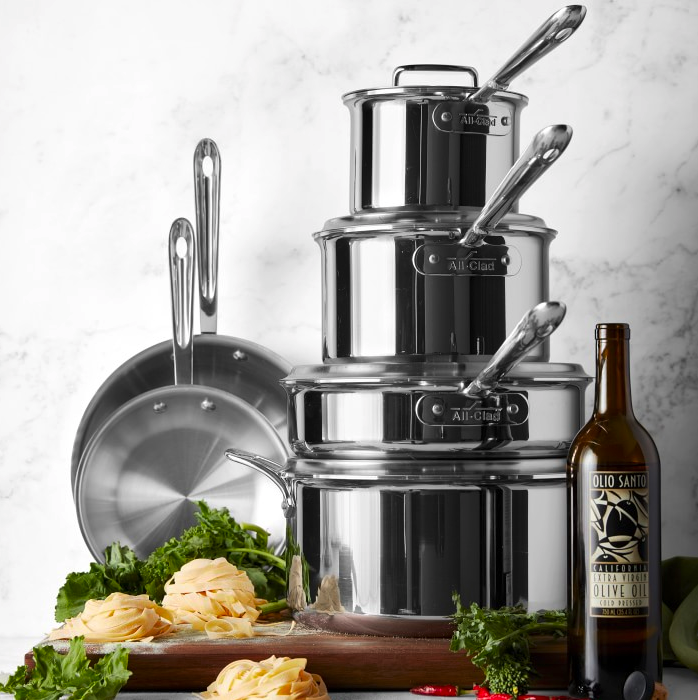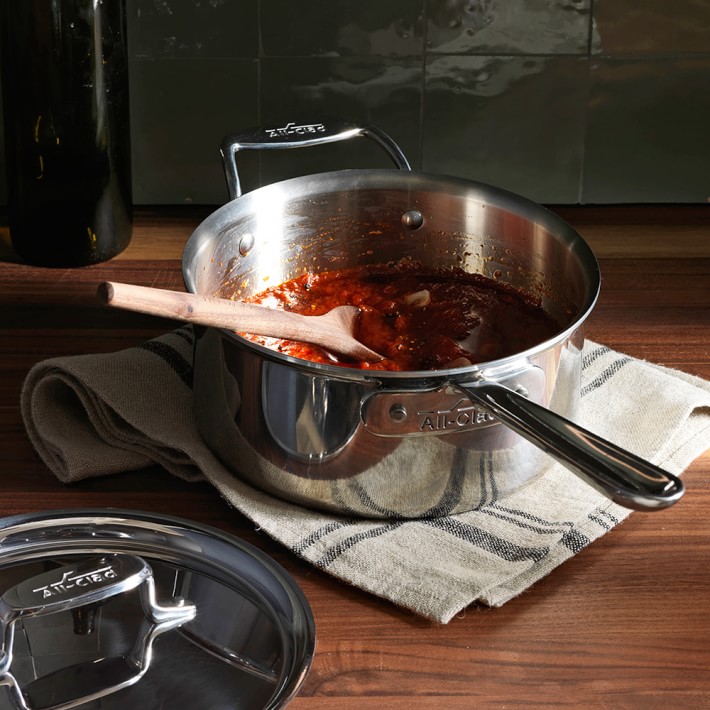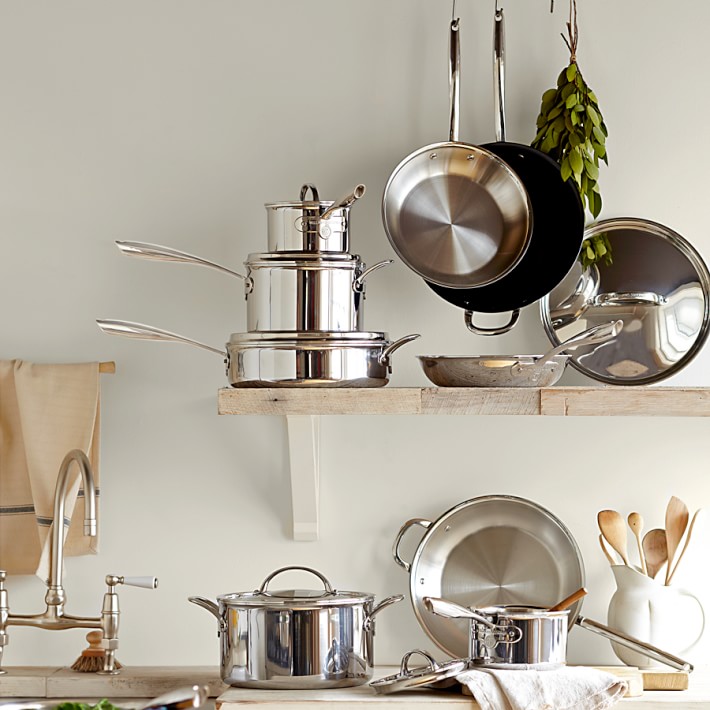
Avid and amateur cooks alike know stainless steel is the little black dress of the kitchen. Pans heat up quickly thanks to responsive aluminum or copper cores. They’re often pretty enough to go right from the stovetop to a trivet on the dining table. (You can pluck them off a burner and put them in a pre-heated stove or under a broiler more often than not!) They’re much lighter than cast-iron, and you can typically pop them right in the dishwasher, too. Here’s what you need to know about the cookware that—if you’re lucky—someone is buying for you as one beautiful set.
How to Use Stainless Steel Cookware

When cooking with stainless steel, you want to pick out a high-quality fat, and make sure it’s in the pan before you start heating it up too much. (An empty pan on a hot burner can warp!) If you chose a nonstick stainless steel pan, eschew cooking sprays and stick to silicone, nylon and wooden stirring implements.) If your food sticks or burns, it’s possible the temperature was too high. Traditionally, stainless steel is oven- and broiler-safe to a maximum of 600°F, and can often go under the broiler. (But read the fine print on your brand: Nonstick stainless steel, for example, will often be oven-safe only to 400°F or 500°F, and can’t go under the broiler.) Compatible with nearly every cooktop, most stainless steel is induction-friendly, too, but a few are not. When in doubt, see if your magnet sticks to the base of your pan; if it does, you’re golden.
How to Store Stainless Steel Cookware

Got a nonstick-lined piece of stainless steel? Consider a layer of felt or a cookware protector to ensure you don’t scratch it. Otherwise, these beauties are fairly durable. You can invert lids and stack them, largest to smallest, hang a few of the shiniest or most beloved on hooks on a pegboard, or stash them somewhere handy. (You’re going to be using them a lot!)
How to Clean Stainless Steel Cookware

Yes, they’re dishwasher safe, but if you want your stainless steel to last for decades, avoid frequent use of high heat, and wash them by hand. Never use harsh chemicals or steel wool. For stubborn residue, allow to soak overnight in vinegar and warm water or mild soapy water. Baking soda and lemon can sometimes help, with a scrubber, to get off tough stains. A product like Bar Keeper’s Friend can help remove any discoloration or very difficult burnt-on foods, such as sugar.
